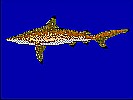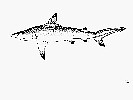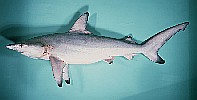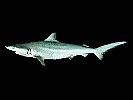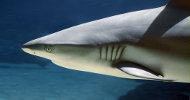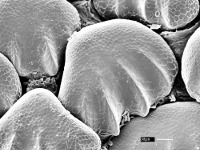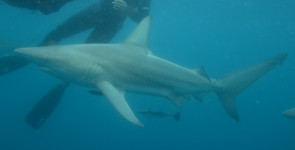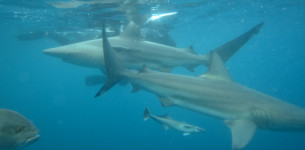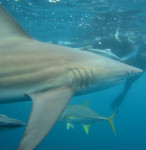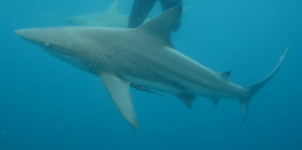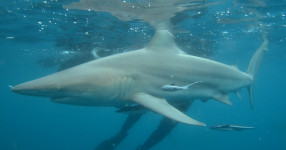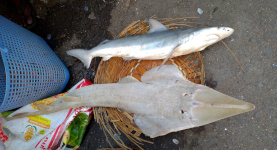Carcharhinus limbatus
(Valenciennes in Müller & Henle, 1839)
Blacktip shark
Classification: Elasmobranchii Carcharhiniformes Carcharhinidae
Reference of the original description
Systematische Beschreibung der Plagiostomen. Berlin, Veit, pp. 1–200
Systematische Beschreibung der Plagiostomen. Berlin, Veit, pp. 1–200
Image of the original description
.jpg)
Carcharhinus limbatus (Müller & Henle, 1839)
.jpg)
Carcharhinus limbatus (Müller & Henle, 1839)
Synonyms / new combinations and misspellings
Carcharhinus aethalorus, Carcharhinus aff. limbatus, Carcharhinus cf. limbatus, Carcharhinus natator, Carcharhinus pleurotaenia, Carcharias aethalorus, Carcharias ehrenbergi, Carcharias limbatus, Carcharias microps, Carcharias natator, Carcharias phorcys, Carcharias pleurotaenia, Carcharias (Prionodon) limbatus, Carcharias (Prionodon) mülleri, Carcharias (Prionodon) pleurotaenia, Carcharinus aethalorus, Carcharinus limbatus, Carcharinus pleurotaenia, Eulamia aethalorus, Eulamia aetholorus, Eulamia limbata, Eulamia limbatus, Eulamia pleurotaenia, Galeolamna pleurotaenia, Isogomphodon limbatus, Squalus (Carcharinus) limbatus
Carcharhinus aethalorus, Carcharhinus aff. limbatus, Carcharhinus cf. limbatus, Carcharhinus natator, Carcharhinus pleurotaenia, Carcharias aethalorus, Carcharias ehrenbergi, Carcharias limbatus, Carcharias microps, Carcharias natator, Carcharias phorcys, Carcharias pleurotaenia, Carcharias (Prionodon) limbatus, Carcharias (Prionodon) mülleri, Carcharias (Prionodon) pleurotaenia, Carcharinus aethalorus, Carcharinus limbatus, Carcharinus pleurotaenia, Eulamia aethalorus, Eulamia aetholorus, Eulamia limbata, Eulamia limbatus, Eulamia pleurotaenia, Galeolamna pleurotaenia, Isogomphodon limbatus, Squalus (Carcharinus) limbatus
Types
Carcharhinus limbatus
Syntype: MNHN: 3468;
Carcharhinus natator
Holotype: USNM: 79310;
Carcharias aethalorus
Lectotype: USNM: 29549; Paralectotype: USNM: 28202;
Carcharias ehrenbergi
Syntype: SMNS: 12259 (ex 1642 1/2); SMNS: 12137; ZMB: 4472 ZMB: 4470
Carcharias phorcys
Holotype: USNM: 50612; Paratype: BPBM: 1685 (missing) MCZ: 89506 (missing) SU: 12715
Carcharias (Prionodon) mülleri
Holotype: NMW: lost ? not found in 2011;
Carcharias (Prionodon) pleurotaenia
Syntype: BMNH: 1867.11.28.176 RMNH: 7385
Carcharhinus limbatus
Syntype: MNHN: 3468;
Carcharhinus natator
Holotype: USNM: 79310;
Carcharias aethalorus
Lectotype: USNM: 29549; Paralectotype: USNM: 28202;
Carcharias ehrenbergi
Syntype: SMNS: 12259 (ex 1642 1/2); SMNS: 12137; ZMB: 4472 ZMB: 4470
Carcharias phorcys
Holotype: USNM: 50612; Paratype: BPBM: 1685 (missing) MCZ: 89506 (missing) SU: 12715
Carcharias (Prionodon) mülleri
Holotype: NMW: lost ? not found in 2011;
Carcharias (Prionodon) pleurotaenia
Syntype: BMNH: 1867.11.28.176 RMNH: 7385
Description :
Citation: Carcharhinus limbatus (Valenciennes in Müller & Henle, 1839): In: Database of modern sharks, rays and chimaeras, www.shark-references.com, World Wide Web electronic publication, Version 12/2025
Please send your images of "Carcharhinus limbatus" to info@shark-references.com
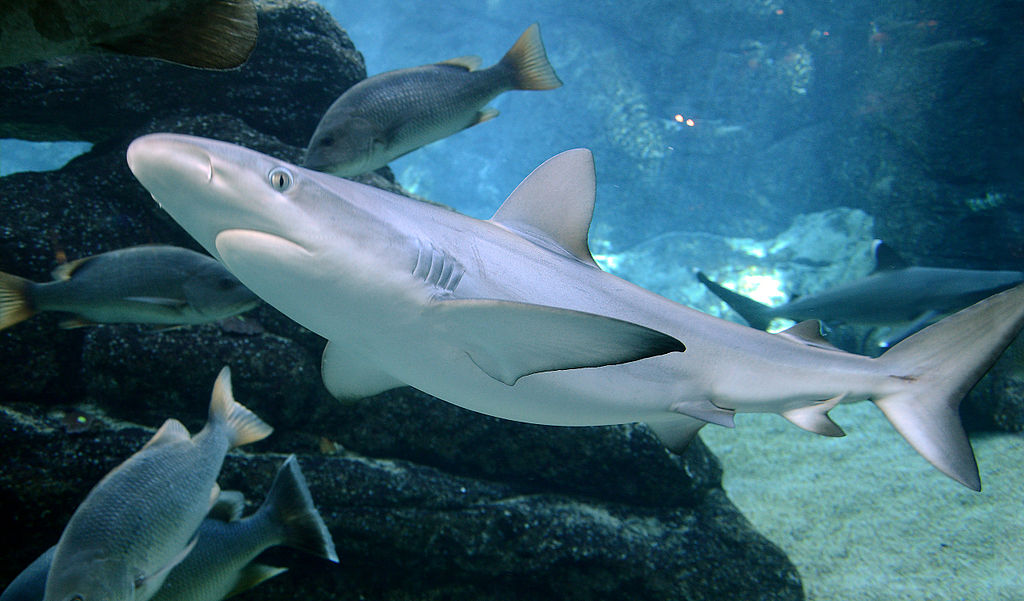
Carcharhinus limbatus (Müller & Henle, 1839), in UShaka Sea World, © Amada44

Carcharhinus limbatus (Müller & Henle, 1839), in UShaka Sea World, © Amada44
Common names
 Blauhai,
Blauhai,  Kleiner Atlantischer Schwarzspitzenhai,
Kleiner Atlantischer Schwarzspitzenhai,  Balicero,
Balicero,  Cazón,
Cazón,  Macuira,
Macuira,  Puntas negras,
Puntas negras,  Puntinegro,
Puntinegro,  Tiburon macuira,
Tiburon macuira,  Tiburón,
Tiburón,  Tiburón de aletas negras,
Tiburón de aletas negras,  Tiburón de punta negra,
Tiburón de punta negra,  Tiburón de puntas negras,
Tiburón de puntas negras,  Tiburón machado,
Tiburón machado,  Tiburón manchado,
Tiburón manchado,  Tiburón tollo,
Tiburón tollo,  Tiburón volador,
Tiburón volador,  Tollo,
Tollo,  Tollo aletinegro,
Tollo aletinegro,  Volador,
Volador,  Mangeur d"hommes,
Mangeur d"hommes,  Requin blanc,
Requin blanc,  Requin bordé,
Requin bordé,  Requin demoiselle,
Requin demoiselle,  Requin néné pointe,
Requin néné pointe,  Black fin shark,
Black fin shark,  Black tip,
Black tip,  Black tip shark,
Black tip shark,  Black-tip shark,
Black-tip shark,  Black-tipped shark,
Black-tipped shark,  Blackfin shark,
Blackfin shark,  Blacktip shark,
Blacktip shark,  Blacktip whaler,
Blacktip whaler,  Common blacktip shark,
Common blacktip shark,  Grey shark,
Grey shark,  Requiem shark,
Requiem shark,  Shark,
Shark,  Small black tipped shark,
Small black tipped shark,  Small blacktip shark,
Small blacktip shark,  Spot-fin ground shark,
Spot-fin ground shark,  Squalo orlato,
Squalo orlato,  Squalo pinne nere,
Squalo pinne nere,  Cação,
Cação,  Cação de fundo,
Cação de fundo,  Cação-do-fundo,
Cação-do-fundo,  Cação-galha-preta,
Cação-galha-preta,  Cação-peru,
Cação-peru,  Cação-ponta-petra,
Cação-ponta-petra,  Cação-ponta-preta,
Cação-ponta-preta,  Cação-sicuri,
Cação-sicuri,  Corta-garoupa,
Corta-garoupa,  Galha-preta,
Galha-preta,  Machote,
Machote,  Marracho macuira,
Marracho macuira,  Marracho-de pontas-negras,
Marracho-de pontas-negras,  Marracho-de-pontas-negras,
Marracho-de-pontas-negras,  Serra-garoupa,
Serra-garoupa,  Sicuri,
Sicuri,  Sicuri-de-galha-preta,
Sicuri-de-galha-preta,  Sicuri-de-ponta-preta,
Sicuri-de-ponta-preta,  Sucuri-da-galha-preta,
Sucuri-da-galha-preta,  Tubarão galha preta,
Tubarão galha preta,  Tubarão-de-pontas-negras
Tubarão-de-pontas-negras
 Blauhai,
Blauhai,  Kleiner Atlantischer Schwarzspitzenhai,
Kleiner Atlantischer Schwarzspitzenhai,  Balicero,
Balicero,  Cazón,
Cazón,  Macuira,
Macuira,  Puntas negras,
Puntas negras,  Puntinegro,
Puntinegro,  Tiburon macuira,
Tiburon macuira,  Tiburón,
Tiburón,  Tiburón de aletas negras,
Tiburón de aletas negras,  Tiburón de punta negra,
Tiburón de punta negra,  Tiburón de puntas negras,
Tiburón de puntas negras,  Tiburón machado,
Tiburón machado,  Tiburón manchado,
Tiburón manchado,  Tiburón tollo,
Tiburón tollo,  Tiburón volador,
Tiburón volador,  Tollo,
Tollo,  Tollo aletinegro,
Tollo aletinegro,  Volador,
Volador,  Mangeur d"hommes,
Mangeur d"hommes,  Requin blanc,
Requin blanc,  Requin bordé,
Requin bordé,  Requin demoiselle,
Requin demoiselle,  Requin néné pointe,
Requin néné pointe,  Black fin shark,
Black fin shark,  Black tip,
Black tip,  Black tip shark,
Black tip shark,  Black-tip shark,
Black-tip shark,  Black-tipped shark,
Black-tipped shark,  Blackfin shark,
Blackfin shark,  Blacktip shark,
Blacktip shark,  Blacktip whaler,
Blacktip whaler,  Common blacktip shark,
Common blacktip shark,  Grey shark,
Grey shark,  Requiem shark,
Requiem shark,  Shark,
Shark,  Small black tipped shark,
Small black tipped shark,  Small blacktip shark,
Small blacktip shark,  Spot-fin ground shark,
Spot-fin ground shark,  Squalo orlato,
Squalo orlato,  Squalo pinne nere,
Squalo pinne nere,  Cação,
Cação,  Cação de fundo,
Cação de fundo,  Cação-do-fundo,
Cação-do-fundo,  Cação-galha-preta,
Cação-galha-preta,  Cação-peru,
Cação-peru,  Cação-ponta-petra,
Cação-ponta-petra,  Cação-ponta-preta,
Cação-ponta-preta,  Cação-sicuri,
Cação-sicuri,  Corta-garoupa,
Corta-garoupa,  Galha-preta,
Galha-preta,  Machote,
Machote,  Marracho macuira,
Marracho macuira,  Marracho-de pontas-negras,
Marracho-de pontas-negras,  Marracho-de-pontas-negras,
Marracho-de-pontas-negras,  Serra-garoupa,
Serra-garoupa,  Sicuri,
Sicuri,  Sicuri-de-galha-preta,
Sicuri-de-galha-preta,  Sicuri-de-ponta-preta,
Sicuri-de-ponta-preta,  Sucuri-da-galha-preta,
Sucuri-da-galha-preta,  Tubarão galha preta,
Tubarão galha preta,  Tubarão-de-pontas-negras
Tubarão-de-pontas-negras
Short Description
Diagnose after Compagno,1984 [517]: Field Marks : A large fairly stout grey shark with a long pointed snout, small eyes, narrow, mostly erect- and narrow-cusped serrated upper anterolateral teeth without cusplets, long gill slits, lower teeth with narrow, usually serrated cusps, usually 15/14 to 15 rows of anterolateral teeth, no interdorsal ridge, moderately large pectoral fins, a large first dorsal with a short rear tip and a moderately large second dorsal with a short rear tip, and usually black tips on most fins in juveniles to adults. Diagnostic Features: A fairly stocky species (up to about 2.6 m). Snout moderately long and moderately pointed; internarial width 1.3 to 1.7 times in preoral length; eyes circular and moderately large, their length 1.2 to 2.2% of total length; anterior nasal flaps low, triangular, and not elongated; upper labial furrows short and inconspicuous; hyomandibular line of pores just behind mouth corners not conspicuously enlarged; gill slits long, the third 3.8 to 4.9% of total length but less than half of first dorsal base; usually 15/14 to 15 rows of anteroposterior teeth in each jaw half but varying from 14 to 16/13 to 16; upper teeth with narrow, strongly serrated, erect to slightly oblique high cusps, and crown feet with slightly coarser serrations but no cusplets; lower teeth with erect, narrow, serrated high cusps and transverse roots. No interdorsal ridge. First dorsal fin large and falcate, with a pointed or narrowly rounded apex and posterior margin curving ventrally from fin apex; origin of first dorsal fin usually over or slightly posterior to pectoral insertion, but exceptionally near the pectoral free rear tip; inner margin of first dorsal short, about a third of dorsal base; second dorsal fin large and high, its height 2.5 to 3.6% of total length, its inner margin short and 1.1 to 1.6 times its height; origin of second dorsal over or slightly anterior to anal origin; pectoral fins moderately large, falcate, with narrowly rounded or pointed apices, length of anterior margins about 18 to 20% of total length in individuals above 1 m long; 174 to 203 total vertebral centra, 88 to 102 precaudal centra. Colour grey or grey-brown above, white below; black tips usually present on pectorals, second dorsal, and ventral caudal lobe, and sometimes on pelvic and anal fins (anal usually plain), and black edges usually present on first dorsal apex and dorsal caudal lobe; adults in some areas may have plain or virtually plain fins. A conspicuous white band on flanks.
Diagnose after Compagno,1984 [517]: Field Marks : A large fairly stout grey shark with a long pointed snout, small eyes, narrow, mostly erect- and narrow-cusped serrated upper anterolateral teeth without cusplets, long gill slits, lower teeth with narrow, usually serrated cusps, usually 15/14 to 15 rows of anterolateral teeth, no interdorsal ridge, moderately large pectoral fins, a large first dorsal with a short rear tip and a moderately large second dorsal with a short rear tip, and usually black tips on most fins in juveniles to adults. Diagnostic Features: A fairly stocky species (up to about 2.6 m). Snout moderately long and moderately pointed; internarial width 1.3 to 1.7 times in preoral length; eyes circular and moderately large, their length 1.2 to 2.2% of total length; anterior nasal flaps low, triangular, and not elongated; upper labial furrows short and inconspicuous; hyomandibular line of pores just behind mouth corners not conspicuously enlarged; gill slits long, the third 3.8 to 4.9% of total length but less than half of first dorsal base; usually 15/14 to 15 rows of anteroposterior teeth in each jaw half but varying from 14 to 16/13 to 16; upper teeth with narrow, strongly serrated, erect to slightly oblique high cusps, and crown feet with slightly coarser serrations but no cusplets; lower teeth with erect, narrow, serrated high cusps and transverse roots. No interdorsal ridge. First dorsal fin large and falcate, with a pointed or narrowly rounded apex and posterior margin curving ventrally from fin apex; origin of first dorsal fin usually over or slightly posterior to pectoral insertion, but exceptionally near the pectoral free rear tip; inner margin of first dorsal short, about a third of dorsal base; second dorsal fin large and high, its height 2.5 to 3.6% of total length, its inner margin short and 1.1 to 1.6 times its height; origin of second dorsal over or slightly anterior to anal origin; pectoral fins moderately large, falcate, with narrowly rounded or pointed apices, length of anterior margins about 18 to 20% of total length in individuals above 1 m long; 174 to 203 total vertebral centra, 88 to 102 precaudal centra. Colour grey or grey-brown above, white below; black tips usually present on pectorals, second dorsal, and ventral caudal lobe, and sometimes on pelvic and anal fins (anal usually plain), and black edges usually present on first dorsal apex and dorsal caudal lobe; adults in some areas may have plain or virtually plain fins. A conspicuous white band on flanks.
Distribution
Cosmopolitan. Western Atlantic: Nova Scotia, Canada to Brazil [20078]. Eastern Atlantic: Senegal to Democratic Republic of the Congo, Madeira, the Canary Islands, and Mediterranean. Indo-Pacific: Red Sea, Madagascar and South Africa to China, Australia, Tahiti, Marquesas, and Hawaii. Eastern Pacific: Baja California, Mexico to Peru, including the Galapagos Islands.
First record: 2019: New Ireland Province, Papua New Guinea, western Pacific Ocean [27359] Source: www.gbif.org
Cosmopolitan. Western Atlantic: Nova Scotia, Canada to Brazil [20078]. Eastern Atlantic: Senegal to Democratic Republic of the Congo, Madeira, the Canary Islands, and Mediterranean. Indo-Pacific: Red Sea, Madagascar and South Africa to China, Australia, Tahiti, Marquesas, and Hawaii. Eastern Pacific: Baja California, Mexico to Peru, including the Galapagos Islands.
First record: 2019: New Ireland Province, Papua New Guinea, western Pacific Ocean [27359] Source: www.gbif.org
Human uses
fisheries: commercial; gamefish: yes
fisheries: commercial; gamefish: yes
Biology
Distinct pairing with embrace [17086]. Viviparous, with a yolk-sac placenta, 1 to 10 young per litter. Gestation period is 10 to 12 months. Nursery and pupping grounds are located inshore where pregnant females go to drop their young. Females are thought to spawn only every two years. Size at birth 38-72 cm [517]; 55-66 cm TL [2539].
Diet: Ecuadorian Pacific [25131]: (data basis: 44 (4 females, 40 males), 25 had empty stomach, TL 132 cm -224 cm); Diet: including 12 identifiable dietary components (10 teleosts, one elasmobranch and one crustacean) and the remains of cephalopods, fishes and batoids. Based on the %IRI, teleosts were the most important group followed by elasmobranchs, crustaceans and cephalopods; the fishes T. albacares (27.34%), Exocoetus monocirrhuns (13.29%), A. thazard (13.18%), Katsuwonus pelamis (12.25%) and members of the Ophichthidae family (6.14%) were the most important to C. limbatus diet. The small sample size for females (N ¼ 4) impeded the trophic analysis based on sex. Considering each sex separately, 12 prey species were consumed by males (10 teleosts, one batoid and one crustacean), of which the most important prey were: T. albacares (%IRI ¼ 18.7%), A. thazard (8.7%), Larimus argenteus (8.1%) and K. pelamis (8%). Of the four females analysed, only two had stomach contents, which included the remains of teleosts (25.1%) and batoids (75% Occurs on the continental shelf (Ref. 75154). Feeds on benthic invertebrates and fish [20056].
Distinct pairing with embrace [17086]. Viviparous, with a yolk-sac placenta, 1 to 10 young per litter. Gestation period is 10 to 12 months. Nursery and pupping grounds are located inshore where pregnant females go to drop their young. Females are thought to spawn only every two years. Size at birth 38-72 cm [517]; 55-66 cm TL [2539].
Diet: Ecuadorian Pacific [25131]: (data basis: 44 (4 females, 40 males), 25 had empty stomach, TL 132 cm -224 cm); Diet: including 12 identifiable dietary components (10 teleosts, one elasmobranch and one crustacean) and the remains of cephalopods, fishes and batoids. Based on the %IRI, teleosts were the most important group followed by elasmobranchs, crustaceans and cephalopods; the fishes T. albacares (27.34%), Exocoetus monocirrhuns (13.29%), A. thazard (13.18%), Katsuwonus pelamis (12.25%) and members of the Ophichthidae family (6.14%) were the most important to C. limbatus diet. The small sample size for females (N ¼ 4) impeded the trophic analysis based on sex. Considering each sex separately, 12 prey species were consumed by males (10 teleosts, one batoid and one crustacean), of which the most important prey were: T. albacares (%IRI ¼ 18.7%), A. thazard (8.7%), Larimus argenteus (8.1%) and K. pelamis (8%). Of the four females analysed, only two had stomach contents, which included the remains of teleosts (25.1%) and batoids (75% Occurs on the continental shelf (Ref. 75154). Feeds on benthic invertebrates and fish [20056].
Size / Weight / Age
275 cm TL (male/unsexed; [20092]); max. published weight: 122.8 kg (Ref. 4699); max. reported age: 12 years [517]
after Bass et al. 1973 [130]: Carcharhinus limbatus. Size distribution of specimens recorded off the Natal coast. Birth is at 60 to 65cm and sexual maturity at both 180cm.
275 cm TL (male/unsexed; [20092]); max. published weight: 122.8 kg (Ref. 4699); max. reported age: 12 years [517]
after Bass et al. 1973 [130]: Carcharhinus limbatus. Size distribution of specimens recorded off the Natal coast. Birth is at 60 to 65cm and sexual maturity at both 180cm.
|
40 |
60 |
80 |
100 |
120 |
140 |
160 |
180 |
200 |
220 |
240 |
|
|
Males |
5 |
12 |
9 |
2 |
6 |
11 |
30 |
3 |
|||
|
Females |
8 |
7 |
8 |
7 |
10 |
16 |
35 |
33 |
2 |
Habitat
reef-associated; amphidromous [17660]; brackish; marine; depth range 0 - 64 m [17640], usually 0 - 30 m (Ref. 55184)
reef-associated; amphidromous [17660]; brackish; marine; depth range 0 - 64 m [17640], usually 0 - 30 m (Ref. 55184)
Remarks
shark-references Species-ID=775; Links: species description at CICIMAR (Centro Interdisciplinario de Ciencias Marinas)
shark-references Species-ID=775; Links: species description at CICIMAR (Centro Interdisciplinario de Ciencias Marinas)
Parasites (arranged by Jürgen Pollerspöck)
Myxosporea
Monogenea
Cestoda
Trematoda
Nematoda
Copepoda
Isopoda
Hirudinea
Myxosporea
Monogenea
- Dermophthirius penneri Benz, 1987 [17205] [7618]
- Dionchus sp. [7575]
- Erpocotyle maccallumi (Price, 1942) [17150] [17205]
Cestoda
- Anthobothrium sp. [16909]
- Anthobothrium spinosum Subhapradha, 1955 [16423]
- Callitetrarhynchus gracilis (Rudolphi, 1819) Pintner, 1931 [16209] [16112] [32402]
- Cathetocephalus australis Schmidt & Beveridge, 1990 [16197]
- Cathetocephalus limbatus Pramanik & Manna, 2006 [16374]
- Dasyrhynchus giganteus (Diesing 1850) Pintner 1929 [16187]
- Dasyrhynchus pacificus Robinson, 1965 [5977] [16112] [25154]
- Dasyrhynchus variouncinatus (Pintner, 1913) [16112]
- Floriceps saccatus Cuvier, 1817 [16112]
- Heteronybelinia estigmena (Dollfus, 1960) [17852] [16366] [16209] [16209] [17845] [16112] [16112] [15747] [21816] [27172] [32432]
- Heteronybelinia overstreeti Palm, 2004 [16112]
- Heteronybelinia robusta (Linton, 1890) [16366] [16112] [27172]
- Nybelinia indica Chandra, 1986 [16366] [17845] [16112] [27172]
- Nybelinia lingualis (Cuvier, 1817) [16209] [16112]
- Otobothrium australe Palm, 2004 [16112] [17826]
- Otobothrium carcharidis (Shipley & Hornell, 1906) [24083]
- Otobothrium crenacolle Linton, 1890 [24083]
- Otobothrium cysticum (Mayer, 1842) [16112]
- Otobothrium insigne Linton, 1905 [16209] [16112]
- Otobothrium minutum Subhapradha, 1955 [16423] [16112]
- Otobothrium mugilis Hiscock, 1954 [17826]
- Otobothrium penetrans Linton, 1907 [16112]
- Paraorygmatobothrium sp. [16909] [25840]
- Phoreiobothrium danae Caira, Bueno & Jensen, 2025 [35028]
- Phoreiobothrium sp. [16909]
- Poecilancistrium caryophyllum (Diesing, 1850) Dollfus, 1929 [16112]
- Proemotobothrium southwelli Beveridge & Campbell, 2001 [16257] [16112] [17827]
- Pseudogrillotia perelica (Shuler, 1938) [16112]
- Pterobothrium acanthotruncatum Escalante & Carvajal, 1984 [16283] [16112]
- Pterobothrium heteracanthum Diesing, 1850 [16112]
- Scyphophyllidium bullardi (Ruhnke, Daniel & Jensen, 2020) [28796]
- Scyphophyllidium deburonae (Ruhnke, Daniel & Jensen, 2020) [28796]
- Scyphophyllidium mattisi (Ruhnke, Daniel & Jensen, 2020) [28796]
- Scyphophyllidium musculosum (Subhapradha, 1955) [16423]
- Tentacularia coryphaenae Bosc, 1797 [16112]
- Tylocephalum dasguptai Pramanik & Manna, 2007 [16377]
- Tylocephalum mukundai Pramanik & Manna, 2007 [16377]
Trematoda
- Paramonilicaecum sp. [21487]
- Selachohemecus benzi Bullard, Overstreet & Carlson, 2006 [7400] [19641] [28146]
- Staphylorchis pacificus (Caballero, 1945) Cutmore, Bennett & Cribb, 2010 [23771]
Nematoda
- Pulchrascaris sp. [16939]
Copepoda
- Achtheinus dentatus Wilson, 1911 [27172]
- Alebion carchariae Krøyer, 1863 [16589] [19356] [19355]
- Alebion crassus (Bere, 1936) [16583]
- Alebion maculatus Wilson, 1932 [15303] [26229] [26820]
- Dinemoura discrepans Cressey, 1967 [14993]
- Eudactylina aspera Heller, 1865 [16589] [15305] [27172]
- Kroyeria longicauda Cressey, 1970 [16589] [17867] [15303] [15305] [22489] [27172] [34815]
- Lepeophtheirus longispinosus Wilson, 1908 [16589] [15305] [27172]
- Nemesis atlantica Wilson, 1922 [16589]
- Nemesis lamna Risso, 1826 [21355]
- Nemesis pilosus Pearse, 1951 [16589]
- Nemesis sp. [27172]
- Nesippus crypturus Heller, 1868 [16589] [15284] [27172]
- Nesippus orientalis Heller, 1868 [16589] [15304] [15284] [27172]
- Pandarus carcharhini Ho, 1963 [16599] [15303]
- Pandarus smithii Rathbun, 1886 [16599] [19356] [19355] [33255]
- Paralebion elongatus Wilson, 1911 [16589] [15305] [27172]
- Perissopus dentatus Steenstrup & Lütken, 1861 [16589] [15305]
- Pseudopandarus longus (Gnanamuthu, 1951) [25052]
Isopoda
- Gnathia dejimagi Ota, 2014 [22155]
- Gnathia nubila Ota & Hirose, 2009 [22155]
- Gnathia trimaculata Coetzee, Smit, Grutter & Davies, 2009 [17188] [22155]
Hirudinea








